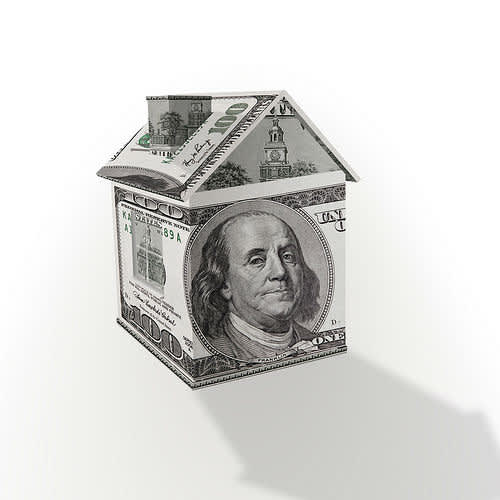
Scarinci Hollenbeck, LLC
The Firm
201-896-4100 info@sh-law.comFirm Insights
Author: Scarinci Hollenbeck, LLC
Date: October 10, 2013

The Firm
201-896-4100 info@sh-law.com
Everyone from former U.S. Senator Fred Thompson to actor Robert Wagner is currently pitching reverse mortgages on television. From the advertisements, these financial transactions appear to be a lifesaver for cash-strapped retirees. However, homeowners should understand that reverse mortgages also carry significant risks.
In basic terms, a reverse mortgage is a special type of loan that allows homeowners to convert a portion of the equity in their home into cash. To apply, homeowners must generally own their home outright or owe little money on an existing mortgage, as well as meet certain age restrictions. Borrowers can elect to receive periodic payments or a lump sum disbursement. They must still pay annual taxes, property insurance, and maintenance or risk default on the mortgage. Most reverse mortgages are non-recourse loans, which means that the lender has cannot pursue any of the borrower’s other assets in the event of default.
Reverse mortgages do not have to be repaid until the home is sold, no longer used as a principal residence, or the borrower defaults on the obligations of the mortgage. At that time, the borrowers must repay all payments, interest, and finance charges. If the borrower dies, the loan must also be repaid, and any remaining equity in the property then passes to the heirs. Any mortgage debt, however, is not transferrable.
While reverse mortgages sound good in theory, they do not always work out as anticipated. In fact, approximately 1 in 10 were in default at the end of 2012.
In addition, many spouses who removed their names from deeds and did not sign mortgage documents in order to meet reverse mortgage age requirements have found themselves facing foreclosure upon the death of their spouses. Lenders claim that the death of the borrower triggers repayment obligations, while the surviving spouses maintain that brokers promised them that they would not be displaced.
The disputes are currently the subject of several lawsuits alleging that lenders failed to comply with the terms of mortgage agreements. The Department of Housing and Urban Development, which insures reverse mortgages, is also facing a suit alleging that agency policies failed to comply with a federal law that specifies that surviving spouses are considered homeowners even if they are not listed on reverse mortgage documents.
The bottom-line is that homeowners should fully consider all of their options before deciding to pursue a reverse mortgage. Like all financial transactions, it carries both risks and rewards.
If you have any questions about reverse mortgages or would like to discuss the legal issues involved, please contact me, Victor Kinon, or the Scarinci Hollenbeck attorney with whom you work.
No Aspect of the advertisement has been approved by the Supreme Court. Results may vary depending on your particular facts and legal circumstances.

Crypto investor protection continues to evolve, with the SEC and CFTC investing resources and coordinating more closely to uphold regulatory standards. Whether you’re a retail investor, an institutional trader, or part of a crypto startup, understanding enforcement trends is essential for navigating this dynamic and high-stakes regulatory environment. Crypto Is No Longer the Wild West […]
Author: Dan Brecher

A Settled Regulatory Environment Enables Confident Capital Planning New Jersey’s new manufacturing incentive program, Next New Jersey Manufacturing Program, enters 2026 with something uncommon in economic development these days: policy stability. The statute is enacted, New Jersey Economic Development Authority’s (“NJEDA”) rules are adopted, and the application portal is open. With the election outcome settled, […]
Author: Michael J. Sheppeard

When done successfully, industry roll-up acquisitions can dramatically grow and strengthen your business. In this post, we break down what an industry roll-up is, why companies pursue it, and what makes it an effective (and sometimes risky) business strategy. What Is an Industry Roll-Up Acquisition? In an industry roll-up acquisition of companies, a buyer acquires multiple companies […]
Author: Dan Brecher

The federal government has launched one of the most ambitious scientific initiatives in decades, and it will redefine how companies develop technology, manage risk, and compete. The Genesis Mission, created by Executive Order and driven by the Department of Energy (“DOE”), is intended to accelerate scientific discovery through a national AI platform that links supercomputers, […]
Author: Michael J. Sheppeard

Stablecoins Leave the Grey Zone Stablecoins were supposed to be the “boring” part of crypto: digital dollars that just work. Yet for years they have lived in a regulatory no-man’s-land, classified one day as securities, the next as commodities, and sometimes as something regulators had not even named yet. That uncertainty is finally starting to […]
Author: Bryce S. Robins

If you operate a business without the proper license, you risk fines, insurance issues, reputational harm, and even business closure. Even innocent mistakes, like forgetting to renew a license, can have significant consequences, such as losing your lawsuit for payment of services that are unlicensed, which makes it imperative to have business license management procedures […]
Author: Dan Brecher
No Aspect of the advertisement has been approved by the Supreme Court. Results may vary depending on your particular facts and legal circumstances.
Consider subscribing to our Firm Insights mailing list by clicking the button below so you can keep up to date with the firm`s latest articles covering various legal topics.
Stay informed and inspired with the latest updates, insights, and events from Scarinci Hollenbeck. Our resource library provides valuable content across a range of categories to keep you connected and ahead of the curve.
Let`s get in touch!
Sign up to get the latest from the Scarinci Hollenbeck, LLC attorneys!